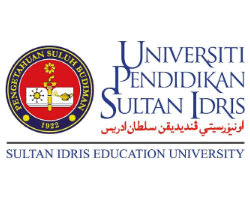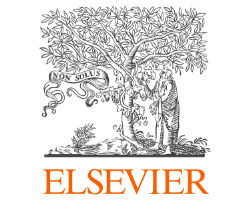Career Finder System using Rule-Based Filtering for University Student Candidates
Abstract
As a current reality, students are frequently questioned about a suitable career path for the future, but they are unaware of the jobs offered by current industries. Moreover, students seeking university admission frequently encounter difficulties selecting courses and educational programs, and they are confronted with a variety of available courses. This research aims to make a mobile application for students to obtain employment career options appropriate to their educational qualifications because student is often asked about a suitable career for their future but have no idea about the available career path that appropriate. The methodology that implements in this research is Mobile Application Development Life Cycle (MADLC) that have four phases which is identification, design, development, and testing. The Visual Studio Code with Flutter plugin is used to develop the mobile application and its function. Firebase is used to get the database to store all the data and works as backend function of the application. The finished system was tested accordingly based on the functionality that listed all available function of the system. The system considers students' educational qualifications and academic achievements to provide personalized recommendations. This system can assist students in making career decisions and pursuing the right career path, saving them time, and reducing the risk of making wrong choices. This research indicates understanding the importance of career decision-making for students before continuing their university studies. In conclusion, this research seeks to enhance the ability of students to make decision of the available career path provided through recommendation system.
Downloads
References
I. Gati, Itamar, M. Krausz and S. Osipow, “A Taxonomy of Difficulties in Career Decision Making,” Journal of Counseling Psychology, vol. 43, no. 4, pp. 510-526, 1996.
I. Gati, and V. Kulcsár, “Making better career decisions: From challenges to opportunities,” Journal of Vocational Behavior, vol. 126, 2021.
V. Kulcsar, A. Dobrean and I. Gati, “Challenges and difficulties in career decision making: Their causes, and their effects on the process and the decision,” Journal of Vocational Behavior, vol. 116, 2019.
F. Farnia, F. M. Nafukho, and K. V. Petrides, “Predicting career decision-making difficulties: The role of trait emotional intelligence, positive and negative emotions,” Frontiers in Psychology, vol. 9, 2018.
M. Kleine, J. Heite and L. Rosendahl, “Subsidized R&D collaboration: The causal effect of innovation vouchers on innovation outcomes,” Research Policy, vol. 51, no. 6, 2022.
G. Chapman and N. Hewitt-Dundas, “The effect of public support on senior manager attitudes to innovation,” Technovation, vol. 69, pp. 28-39, 2018.
E. Izeboud, Prediction of job transition using publicly available professional profiles, The Netherlands: Tilburg University Direktori, 2017.
H. D. Nguyen, Y. Jiang, O. Eiring, D. Chiang, and W. Wang, “Gamification design framework for mobile health: designing a home-based self-management programme for patients with chronic heart failure,” In Social Computing and SocialMedia, vol. 2, pp. 81-98, 2018.
S. Bansal, A. Srivastava and A. Arora, “Topic Modeling Driven Content Based Jobs Recommendation Engine for Recruitment Industry,” Procedia Computer Science, 122, 865–872, 2017.
F. Deng, “Utility-based Recommender Systems Using Implicit Utility and Genetic Algorithm,” Meic, pp. 860–864, 2015.
I. Y. Panessai, M. M. Lakulu, M. H. Abdul Rahman, N. A. Z. Mohd Noor, N. S. Mat Salleh, and Aldrin Aran Bilong, “PSAP: Improving Accuracy of Students’ Final Grade Prediction using ID3 and C4.5”, International Journal of Artificial Intelligence, vol. 6, no. 2, pp. 125-133, Dec. 2019.
Z. King, “Career self-management: Its nature, causes and consequences,” Journal of Vocational Behavior, vol. 65, no. 1, pp. 112–133, 2004.
M. S. Sulaiman, A. A. Tamizi, M. R. Shamsudin, and A. Azmi, “Course recommendation system using fuzzy logic approach,” Indonesian Journal of Electrical Engineering and Computer Science, vol. 17, no. 1, pp. 365-371, 2020.
Z. Keshf, and S. Khanum, “It is a very difficult process”: career service providers’ perspective on career counseling in Pakistani universities,” Heliyon, vol. 8, no. 1, 2022.
B. Thorat, M. Goudar, and S. Barve, “Survey on Collaborative Filtering, Content-based Filtering and Hybrid Recommendation System,” International Journal of Computer Applications, vol. 110, no. 4, pp. 31–36, 2015.
G. Suganeshwari, and S. P. Ibrahim, “A survey on collaborative filtering based recommendation system,” Smart Innovation, Systems and Technologies, vol. 49, pp. 503–518, 2016.
L. Jerrold, “Is seeing believing,” American Journal of Orthodontics and Dentofacial Orthopedics, vol. 142, no. 6, pp. 888–889, 2012.
H. Sobhanam, and A. Mariappan, “A Hybrid Approach to Solve Cold Start Problem in Recommender Systems using Association Rules and Clustering Technique,” International Journal of Computer Applications, vol. 74, no. 4, pp. 17–23, 2013.
F. O. Isinkaye, Y. O. Folajimi, and B. A. Ojokoh, “Recommendation systems: Principles, methods and evaluation,” Egyptian Informatics Journal, vol. 16, no. 3, pp. 261–273, 2015.

























